A guide to gathering proof points for B2B SaaS
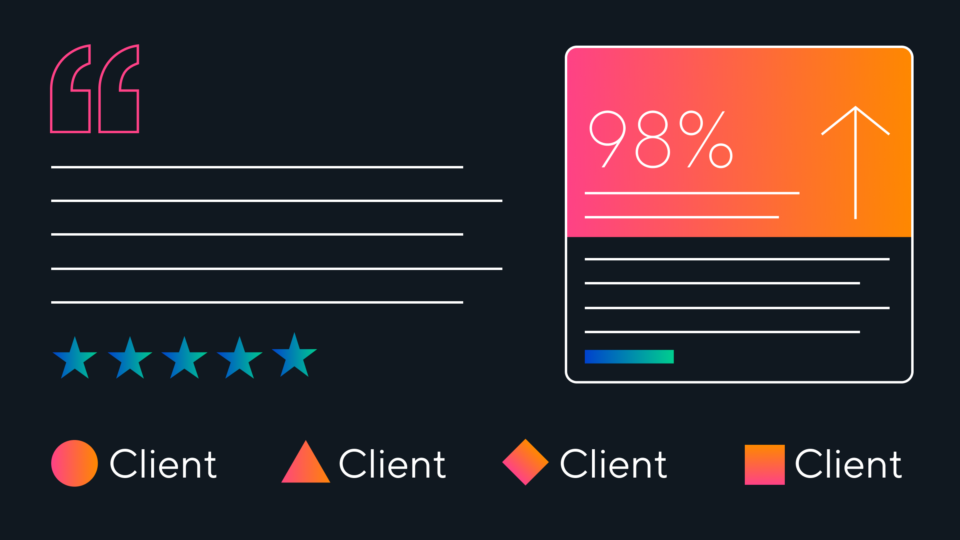
There are many stakeholders in the B2B buying committee, and the decision process is complex. Research shows that businesses won’t invest in your product or service until they have strong enough evidence to trust you. According to G2, 92% of B2B buyers only purchase when they feel confident their choice won’t lead to criticism or career damage.
From testimonials to customer logos, proof points provide a tapestry of reasons to believe that substantiate your claims and make your offer more compelling. When applied strategically, they do much of the trust-building for you.
Proof points are a mainstay in website conversion; they build credibility and trust by dispelling the fears, uncertainties, and objections keeping your visitors from hitting your ‘get a demo’ button — yet many SaaS companies lack the time and expertise to integrate proof points into their marketing and sales strategy effectively.
This guide will help you maximize the impact of proof points across your B2B SaaS website.
7 kinds of proof points to apply to your B2B SaaS website
1. Client Logos
Logos incentivize new prospects to join the ranks by signalling the pedigree of companies, industries, and business leaders already invested in your product or service.
Tiller Tips:
- Get permission from your clients before using their logos on your website
- Choose clients that are respected and represent your ideal company profile
- Consider designing your client logos in black, white, or grayscale so as not to detract from your logo
- Be mindful of respecting your client’s brand guidelines
- Get creative and integrate company logos into testimonials, case studies, and pitch decks
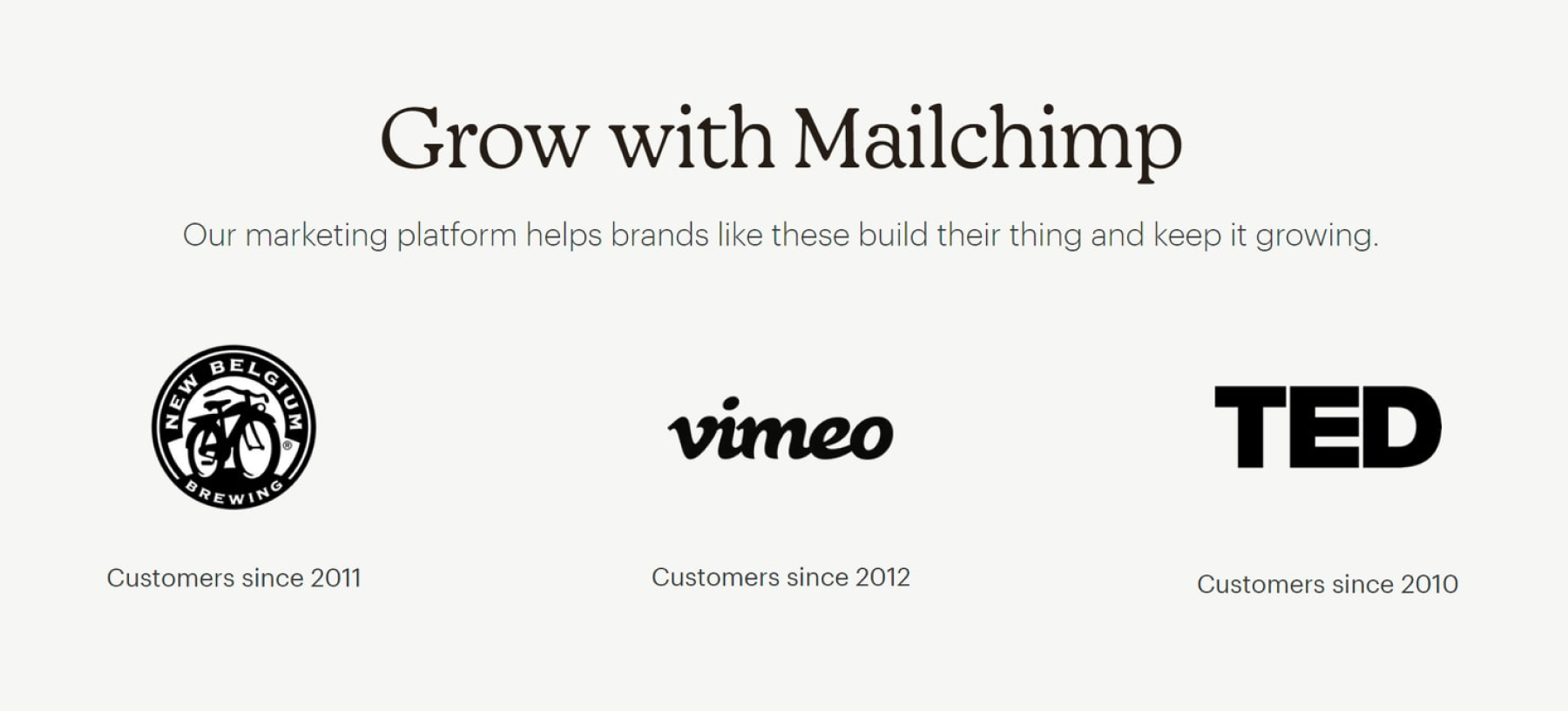

2. Ratings & Reviews
Scour the web for online reviews and ratings of your product or service. Look on popular SaaS third-party review sites like Capterra, G2, or Crunchbase.
Tiller Tips:
- Add short ratings and reviews as ‘micro proof points’ on your page to build trust quickly
- Include the star rating, number of reviews, and logo of the review site
- Compile as many reviews as possible — research demonstrates that greater quantity translates to greater trust and credibility
- Strive for an almost perfect rating of 4 – 4.7 stars (these are the most persuasive)

3. Case Studies & Testimonials
Case studies and testimonials are among the most popular forms of social proof used by SaaS companies. While testimonials are great, case studies are superior because they add context to tangible business impact. Observing another’s success fosters the belief that we will be successful by adopting the same behaviour. Bonus points if you add pictures of people to your case studies and testimonials. Showing real people in similar roles reinforces who you’re selling to and enables web visitors to see themselves on the page.
Tiller Tips:
- Real people trust real people; always add a full name, role, and a headshot
- Build a variety of case studies and testimonials from your happy customers and apply them to the appropriate product or solution page
- Pull short testimonials from case studies
- Incorporate meaningful statistics when possible
- Experiment with written and video testimonials
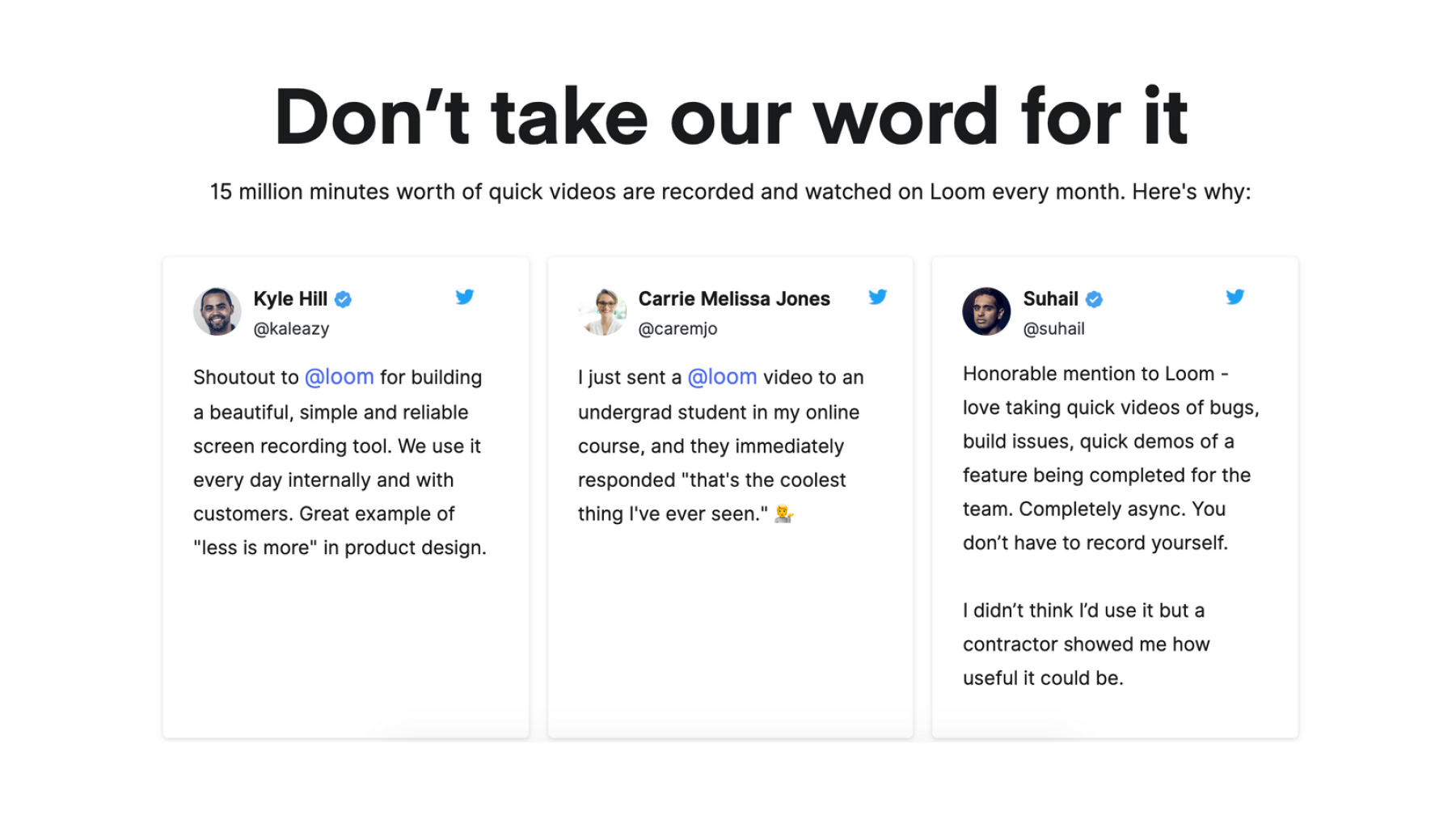
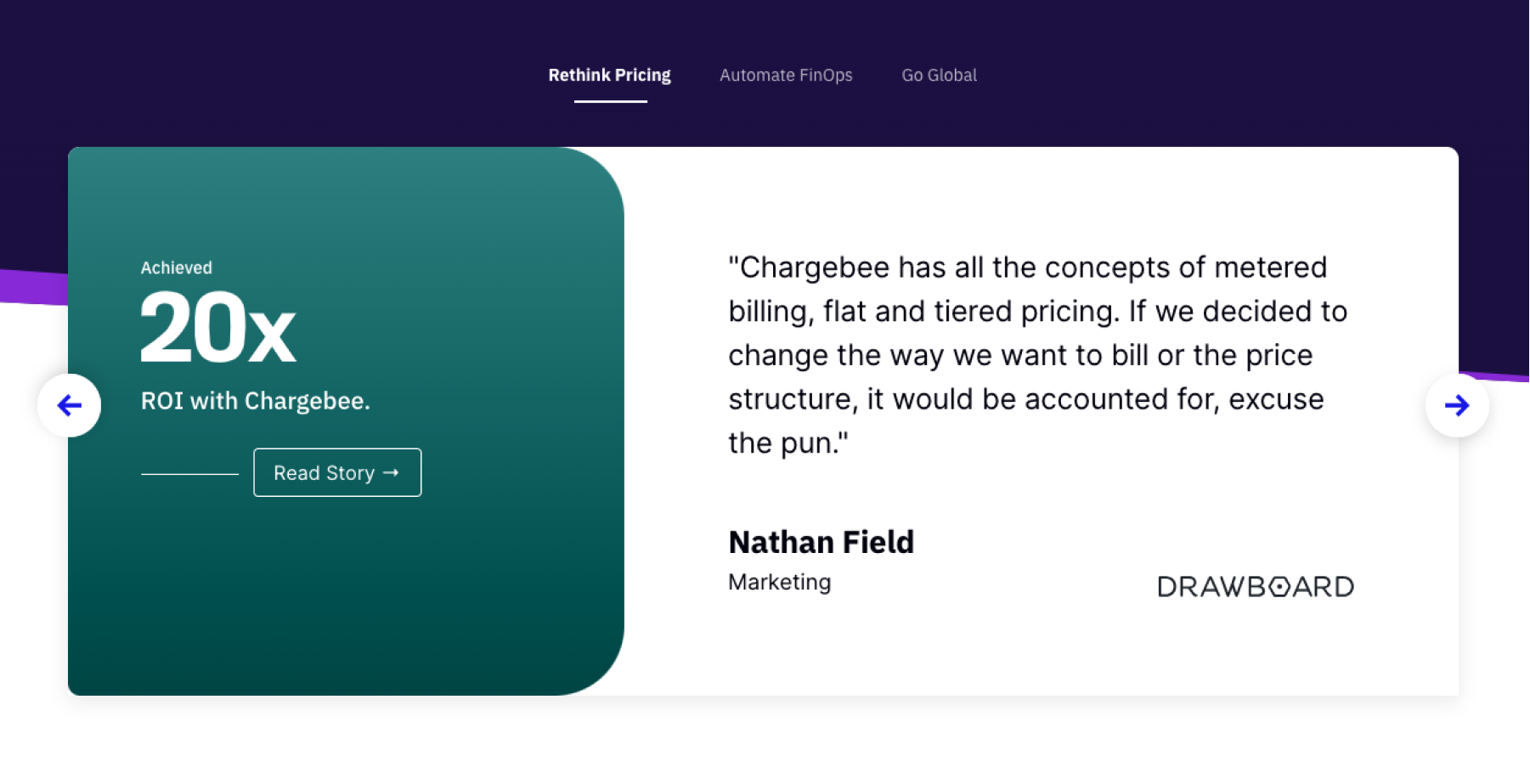
4. Media Articles
News articles and press releases inform your audience of your latest and greatest with objective, third-party proof. Some companies dedicate a page to news and press, whereas others highlight articles across their site.
Tiller Tips:
- Filter media for positive press
- Pull quotes from articles that mention your value
- Add the publication’s logo to build authority
- Categorize media by use case, product type, audience, or solution
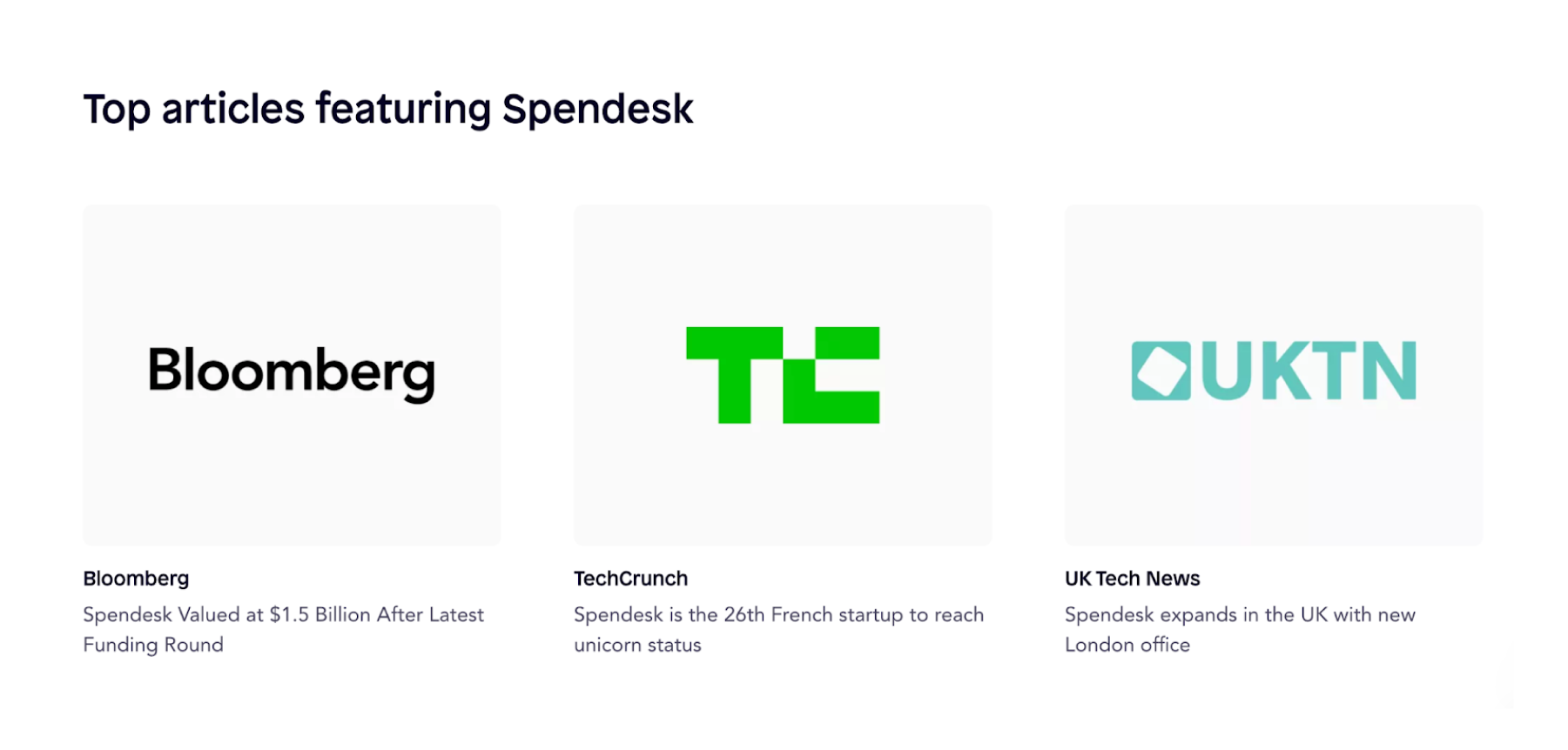
5. Awards & Certificates
Display your ‘trophy case’ of awards front and center of your website. Many SaaS companies add their G2 or Forrester awards above the fold on their homepage to drive home their success as respected industry leaders.
Tiller Tips:
- Strategically place your awards on conversion-focused pages like your pricing page, product pages, and home page
- Select awards that contradict common sales objections like best-in-class data security or ease of use
- Bolster your boldest claims with a variety of accolades from different awarding bodies
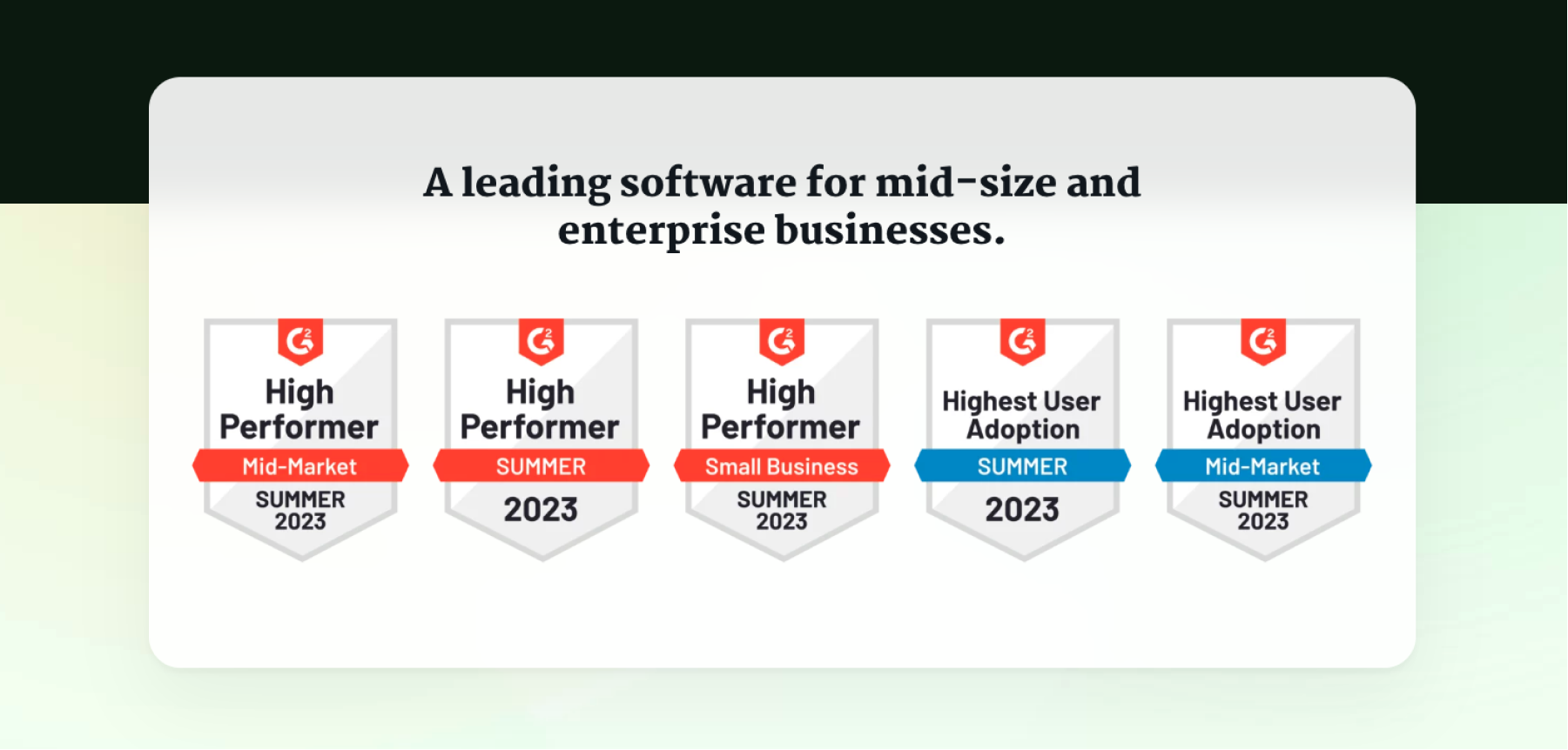
6. Integration Partners
Showcasing your integration partners helps prospects determine compatibility with their existing tech stack. It also serves as social proof, letting visitors know that other leading platforms value your product or service.
Tiller Tips:
- Leave no integration partner logo behind; include them all if possible
- Organize your logos in a band formation, overtop of stats, or in an animation
- Frame the value your integration partners bring to your product or service with a strong headline and subhead
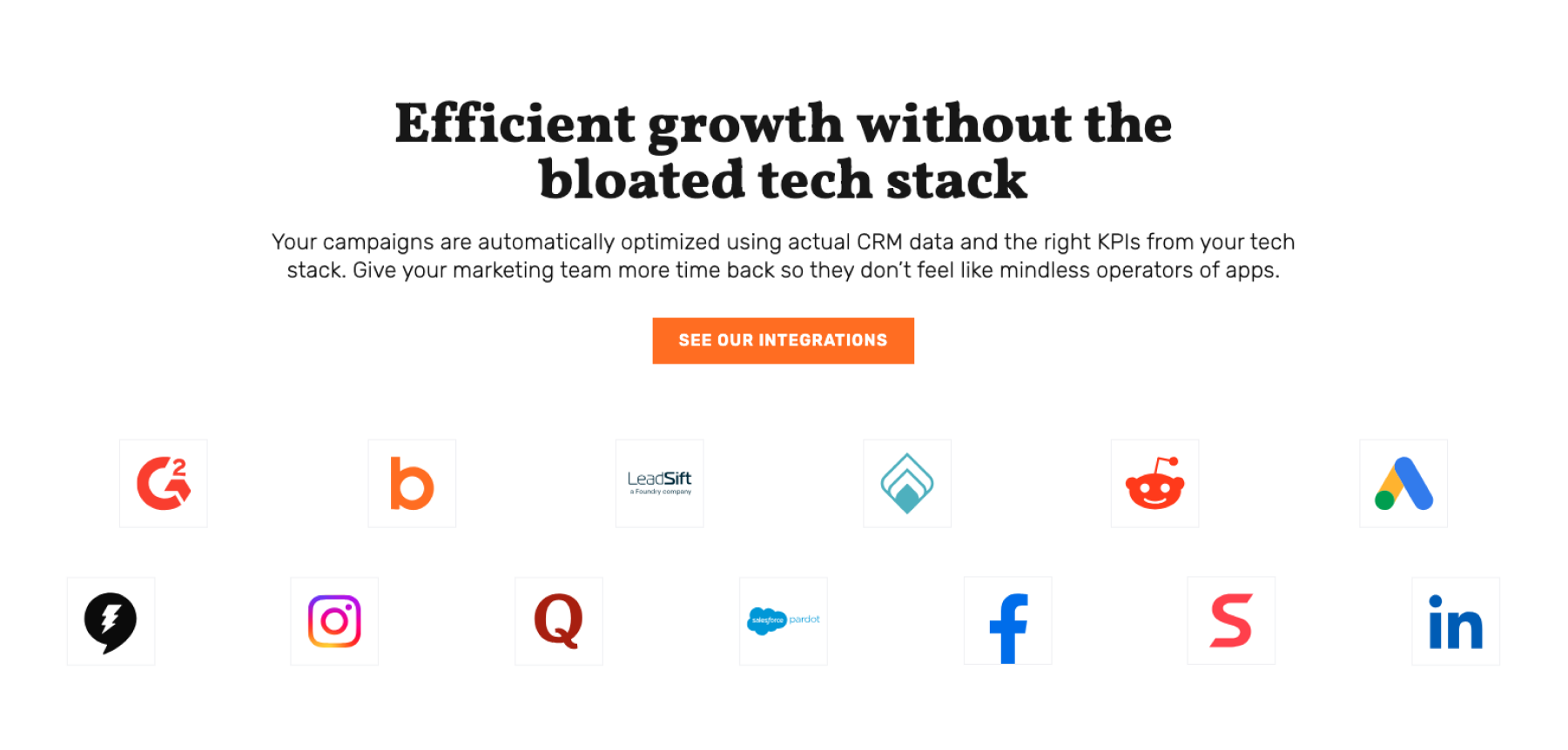
7. Business Statistics
The right numbers say a thousand words. Go beyond generic industry metrics to include meaningful business statistics that satisfy your ideal customer’s deepest desires.
Tiller Tips:
- Reframe your numbers by changing the baseline
- E.g. 99% of our active clients give us a 5-star rating, versus 70% of all our clients
- Add specificity to your stats to make them more memorable and believable
- E.g. 999 is more believable than 1000
- E.g. “132 hours saved in Excel” is more interesting than “132 hours saved”

Put your proof points to work
1. Benchmark your client’s business health

The old adage rings true: You really can’t manage what you don’t measure. Benchmarking helps you measure your impact by comparing your customer’s performance before, during, and after using your product or service.
Task your sales and customer success team with capturing your customer’s business health metrics before using your product or service. What pain points are they trying to solve? Will your product or service help them shorten their sales cycle? Close more deals? Define your customer’s success metrics and monitor them over time.
2. Pan for proof to hit customer gold
Get clear on your proof point strategy before your customers sign on the dotted line. Generally, marketing is responsible for packaging and applying the proof points, whereas your sales or customer success teams are responsible for capturing them. Add a clause in your sales agreement asking for permission to share testimonials, logos, and stats so you don’t have to backtrack later on.
As you build rapport with your clients, use every touchpoint as a launch pad to tell a richer story. If you wait too long, you’ll run the risk of losing the story when your main point of contact inevitably moves on (this is frequent in B2B SaaS).
Bake proof points into your sales and marketing process:
- Send out surveys and questionnaires
- Use video testimonial platforms like Widewail or Trustmary
- Mine social media for feedback and valuable insights
- Host focus groups and engage in 1:1 interviews
- Analyze online reviews and swipe the best ones for your web copy
Don’t just ask users why they love you; ask how their business or role has transformed since finding your product or service.
Solicit valuable feedback with strategic questions:
- Find what triggered your customers to look for you
- E.g. “What was your day-to-day business like before using our product/solution?”
- Uncover your customer’s primary pain points and how you solve them
- E.g. “What are the three main problems our product/service solved for you?”
- Explore what makes your product and service special
- E.g. “What made you decide our product/solution was best for your business?”
3. Build your bank of proof points
Gather all your proof points into a central repository your entire marketing and sales team can access. Categorize proof points by type, value-driver, differentiator, industry, product/service, and buyer type so that you can plug-and-play proof points into your website and marketing collateral.
Don’t forget to continually update your bank of proof points and test their performance on your website. Experiment with placement, type, visuals, and the quantity and quality of your proof points.
Remember, not all proof points carry the same punch (or purpose)
The best proof points speak directly to your target audience (e.g. security stats for IT leaders) and combine rational evidence (e.g. quantifiable results) with emotional evidence (e.g. how your product helped a company overcome a challenge). They reflect your target audience’s voice(s), role(s) and desired outcomes as they evolve across the customer journey.
High-quality proof points increase the probability of conversion by:
- Amplifying motivation to buy
- Conveying unique product or service value
- Reducing perceived risks or objections
Success in B2B SaaS no longer hinges on being the best — it’s about being able to prove that you’re the best, over and over again — with proof points.


